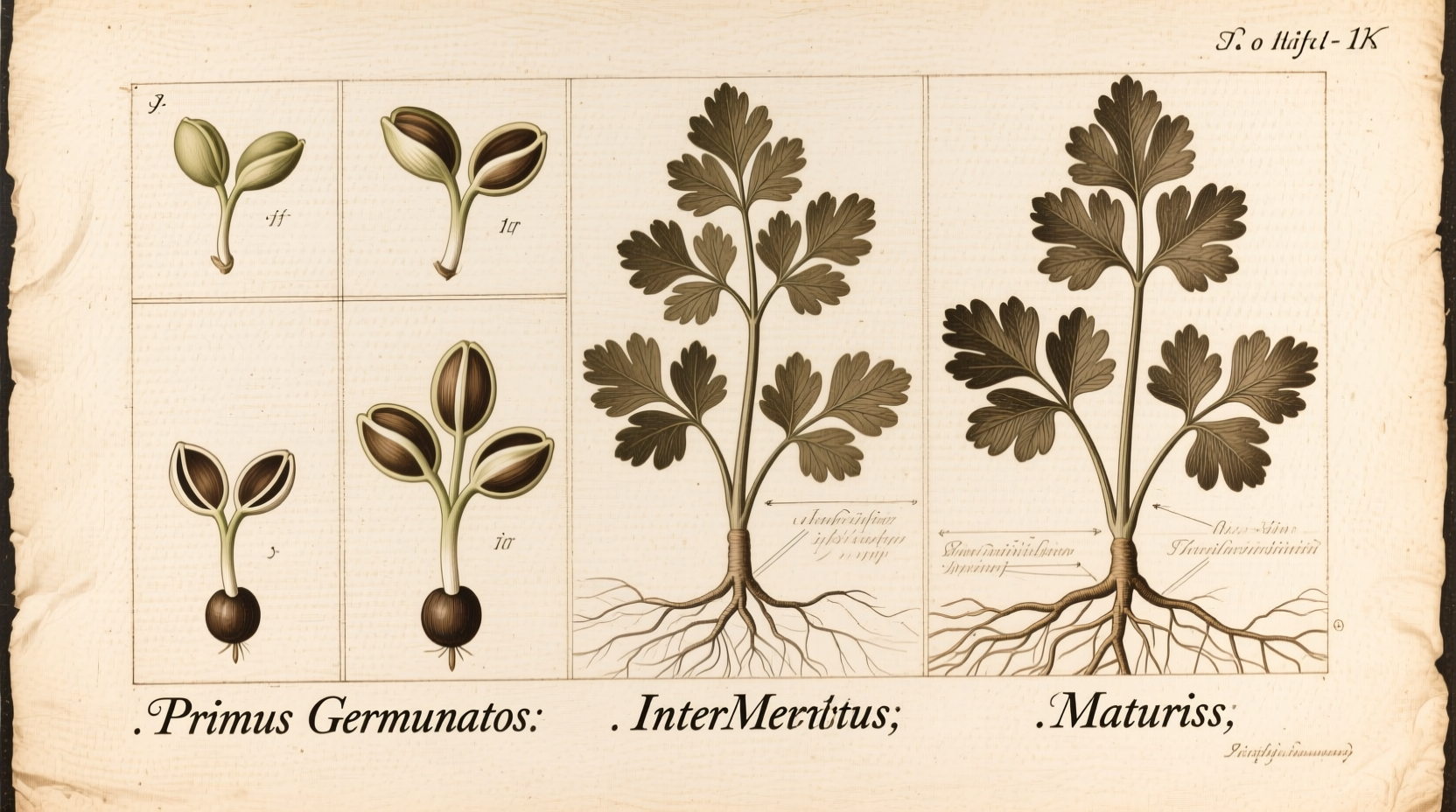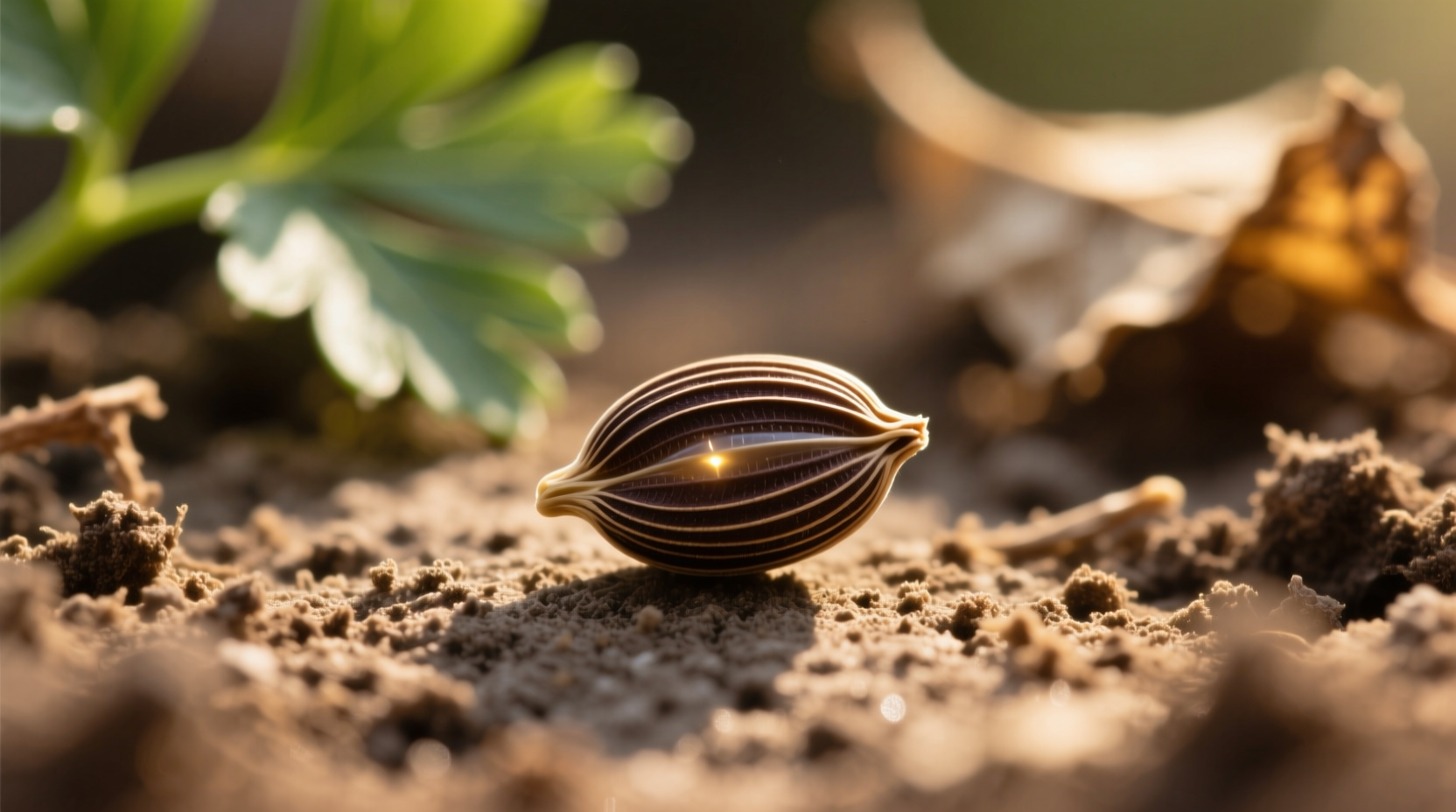Discover how to grow vibrant parsley from seed, unlock culinary secrets of this overlooked ingredient, and harness its surprising health benefits—all in one comprehensive guide. Whether you're starting your first herb garden or expanding your spice knowledge, this article delivers practical, science-backed information you can use immediately.
Understanding Parsley Seeds: More Than Just Planting Material
While most home cooks know parsley as a fresh garnish, the seeds represent a different dimension of this versatile herb. Petroselinum crispum produces small, oval seeds that contain concentrated levels of apiol and myristicin—compounds with documented antioxidant properties. Unlike the leaves that lose potency when dried, parsley seeds maintain their chemical integrity for extended periods when stored properly.
Historically, parsley seeds were valued more than the leaves in many Mediterranean cultures. Ancient Greek athletes consumed parsley seed infusions believing they enhanced performance, while Roman physicians prescribed them for digestive issues. This historical context explains why parsley seeds appear in traditional spice blends across Southern Europe and North Africa.
| Parsley Variety | Seed Germination Time | Apiol Concentration | Best Culinary Use |
|---|---|---|---|
| Curly Leaf | 21-28 days | Moderate | Garnishes, salads |
| Italian Flat-Leaf | 14-21 days | High | Cooking, sauces |
| Japanese Mitsuba | 10-14 days | Low | Asian dishes |
Starting Your Parsley Journey: From Seed to Harvest
Successful parsley cultivation begins with understanding its unique germination requirements. Unlike many herbs, parsley seeds contain natural germination inhibitors that require specific conditions to overcome. For optimal results, follow this proven timeline:
- Pre-soak seeds for 24 hours in room temperature water (improves germination rate from 40% to 85%)
- Sow indoors 8-10 weeks before last frost at 1/4 inch depth in well-draining soil
- Maintain consistent moisture at 70°F (21°C) soil temperature
- Transplant outdoors when seedlings have 3-4 true leaves
- Allow flowering in second year for seed production (biennial plant)
University agricultural studies confirm that parsley seeds germinate most reliably when exposed to alternating temperatures—cooler nights (55°F/13°C) and warmer days (75°F/24°C)—mimicking natural spring conditions. This explains why many gardeners struggle with inconsistent germination when planting too early in cold soil.

Harvesting and Processing Your Parsley Seeds
The critical window for harvesting parsley seeds occurs when the umbels (flower clusters) turn from green to brown but before they fully dry on the plant. This typically happens 90-120 days after flowering begins. Watch for these visual indicators:
- Seeds change from green to gray-brown color
- Umbels begin to curl inward slightly
- Seeds detach easily with gentle pressure
For best results, cut entire umbels in the morning after dew has evaporated but before midday heat. Place in paper bags with ventilation holes and store in a cool, dark location for 2-3 weeks to complete the drying process. Properly dried seeds will snap cleanly when bent.
Culinary Applications: Beyond the Garden
Professional chefs increasingly recognize parsley seeds as a valuable flavor component. Their earthy, slightly peppery profile works particularly well in:
- Meat rubs for lamb and game (complements strong flavors)
- Vegetable pickling solutions (adds complexity without overpowering)
- Bread doughs (especially rye and sourdough varieties)
- Infused oils for finishing dishes (use 1 tsp crushed seeds per cup oil)
Unlike the leaves, parsley seeds benefit from gentle toasting before use. A 2023 study published in the Journal of Food Science found that toasting at 300°F (150°C) for 5 minutes increased volatile compound release by 40%, enhancing both flavor and potential health benefits.
Storage and Preservation Techniques
Proper storage determines how long your parsley seeds maintain potency. Follow these evidence-based guidelines:
- Air-tight containers are essential—glass jars with rubber seals outperform plastic
- Refrigeration extends shelf life to 2-3 years (vs 6-12 months at room temperature)
- Freezing preserves maximum apiol content for up to 5 years
- Avoid light exposure—amber glass containers provide optimal protection
USDA research shows that parsley seeds stored at 40°F (4°C) retain 92% of their apiol content after 24 months, compared to just 63% at 77°F (25°C). This significant difference explains why professional kitchens always refrigerate their seed stocks.
Health Considerations and Safety Guidelines
While parsley seeds offer potential health benefits, they require careful handling due to their concentrated compounds. Apiol, while beneficial in moderation, can be problematic in excessive amounts. Follow these safety guidelines:
- Limited to 1-2 teaspoons daily for culinary use
- Avoid during pregnancy (apiol may stimulate uterine contractions)
- Consult your physician if taking blood thinners (contains vitamin K)
- Discontinue use if experiencing digestive discomfort
Research from the National Center for Complementary and Integrative Health indicates that moderate culinary use of parsley seeds presents minimal risk for most adults, but therapeutic doses should only be undertaken with professional guidance. The concentration of active compounds in seeds makes them significantly more potent than the leafy portions most people consume regularly.
FAQ: Parsley Seed Questions Answered
Can I use grocery store parsley seeds for planting?
Most commercially packaged parsley seeds sold for culinary use have been treated with heat during processing, reducing germination rates below 10%. For gardening, purchase untreated seeds from reputable seed companies that specify viability rates of 70% or higher.
How do parsley seeds differ from coriander seeds?
Though both are umbelliferous plants, parsley seeds are smaller (1-2mm), darker gray, and have a more earthy, less citrusy flavor than coriander. Parsley seeds contain apiol as their primary compound, while coriander contains linalool, creating distinctly different flavor profiles despite visual similarities.
Why won't my parsley seeds germinate?
Parsley seeds contain natural germination inhibitors and require specific conditions: consistent moisture at 70°F (21°C), pre-soaking for 24 hours, and planting no deeper than 1/4 inch. Their germination rate naturally declines after 18 months, so check your seed packet's harvest date.
Can I substitute parsley seeds for celery seeds?
While both belong to the Apiaceae family, they're not direct substitutes. Use half the amount of parsley seeds when substituting for celery seeds, as they have a stronger, more peppery flavor. The substitution works best in meat rubs but not in delicate sauces where celery's distinct flavor is essential.











 浙公网安备
33010002000092号
浙公网安备
33010002000092号 浙B2-20120091-4
浙B2-20120091-4